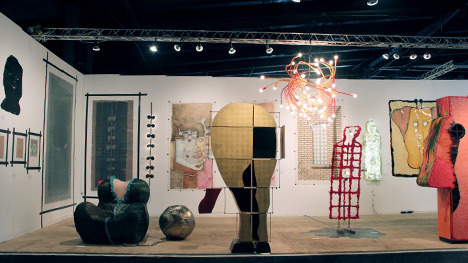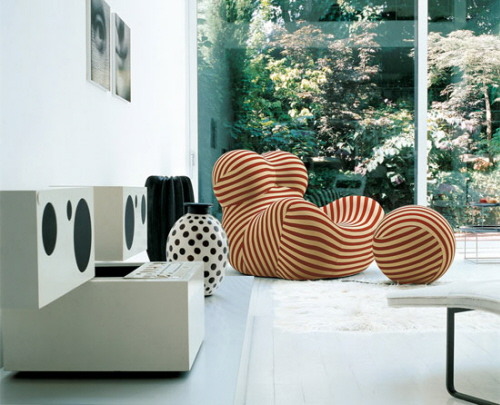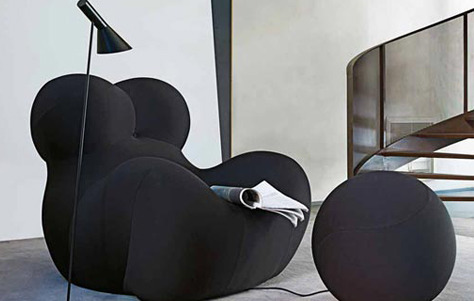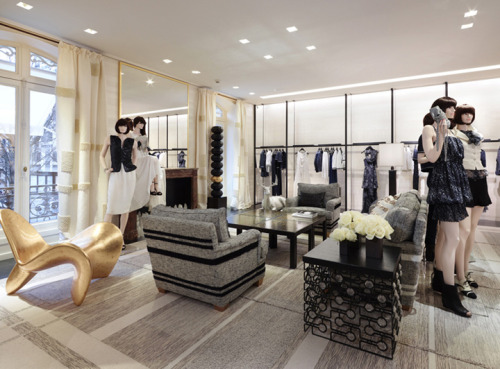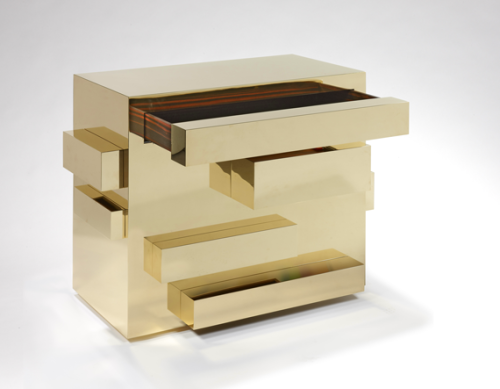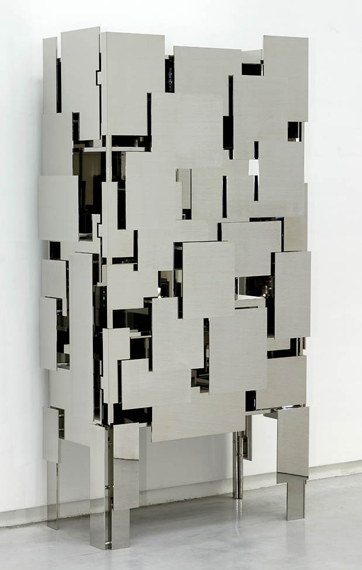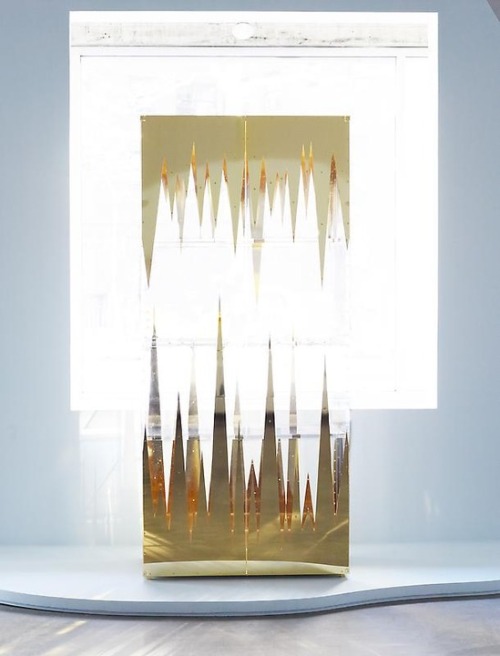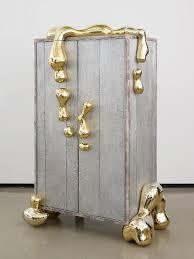We were captivated by this gueridon-bobliothque “MB 960” by Pierre Chareau circa 1930 at Artcurial last week. It is one of the top lots in the upcoming Art Deco sale on March 28th.
This sumptuous solid mahogany table is supported by a metal pedestal with a rolling ball foot. This foot and the hinged arm attached to the bookshelf allows it to rotate out into the room or be tucked into the bookcase. His design process incorporated the functional elements into the overall concept and lifted up these otherwise mundane elements to a new level of intrigue.
Chareau also turned functional elements such as pipes and beams into decorative ones in his iconic Maison de Verre (1928-1932) in Paris,( 31 Rue Saint Guillaume 75007). This is the first house built exclusively of steel and glass, and one of the first loft spaces!
Another version of his adaptable furniture is the expanding ‘fan-effect’ table. There are two examples of this work in the interior image above - just in front and to either side of the painting on the easel.
His work while very luxurious and inline with the tenets of art deco also blurred the lines between the functional and decorative elements by treating them all with the same respect.








